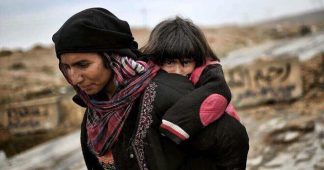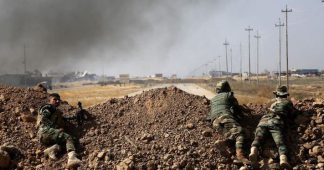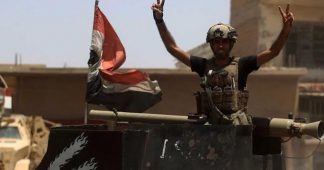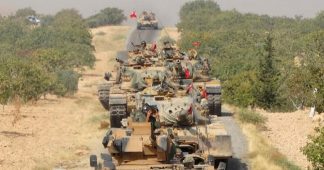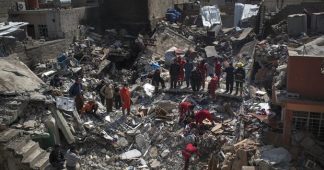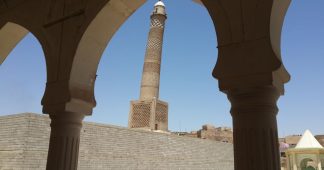Nine things you need to know about Mosul
By
One of the biggest battles this century has just ended in Mosul, Iraq.
The media is full of grim pictures and shocking statistics.
But what do you really know about this ancient cultural centre and its people?
Find out more here.
1. Mosul is old

© iStock
Mosul is one of the world’s oldest cities.
East Mosul is built around the ancient city of Ninevah, first settled around 6,000 BCE.
Over 3,000 years ago, the people living in this fertile area between the Tigris and Euphrates rivers invented the wheel.
They went on to develop the plough, the chariot and one of the world’s first forms of writing.
Some call Ninevah province the ‘cradle of civilization’ and others even believe it was the site of the Garden of Eden.
2. Mosul is diverse

© iStock
Because of its strategic location for trade between Syria, Iraq, Iran, Turkey, Asia and Europe, many different groups settled in Mosul over the centuries.
In modern times, Mosul has been home to Sunni, Shia and Sufi Muslims, Yezidis, Kurds, Turkmens, Christians, Armenians and others.
During the Crusades, Jews found refuge in Mosul. In recent battles, people who fled their homes in other parts of Iraq came to Mosul for safety.
3. Mosul is important to several religions

© iStock
Muslims, Jews and Christians alike revere the prophet known as Jonah in the Bible and Yunus in the Koran, who came to preach in Ninevah.
His tomb in Mosul remained a place of pilgrimage for Muslims and Christians until it was destroyed during the conflict in 2014.
This year archaeologists discovered a stunning find under the tomb: the 2,300-year-old palace of the Assyrian king Sennacherib.
The king’s invasion of the ancient kingdom of Judah is chronicled in the Old Testament.
4. Mosul was beautiful

© iStock
Mosul’s many cultures formed its cityscape, with hundreds of mosques, churches, shrines, libraries and museums.
A tourist guide written before the current conflict recommended that visitors walk the maze of winding streets to enjoy the fascinating markets and beautiful old homes.
Some even called Mosul the ‘pearl of the north’.
5. Mosul is the site of the biggest city-based battle since World War II

© André Liohn/ICRC
From October 2016 to July 2017, house-to-house, street-by-street fighting killed tens of thousands of people.
Since the conflict started, more than 800,000 people have fled the city.
Sometimes people moved from one house to another by breaking windows to reduce the chance of being shot by snipers.
People described how soldiers would be fighting each other downstairs while the family hid upstairs.
Centuries-old houses in the old city sometimes collapsed from bombs that did not even hit them directly.
“All our options lead to death,” one Mosul resident said during the battle.
“If we flee we get shot at by snipers and if we stay, our houses might fall on our heads.”
6. Many of Mosul’s wounded are women and children

© Ibrahim Sherkhan/ICRC
Since October, the International Committee of the Red Cross (ICRC) has treated more than 400,000 people from Mosul for a wide range of medical conditions.
Now, most patients were injured after getting caught in crossfire, bombing or shelling. Many are children whose physical and mental scars may last for life.
“When you talk to the children they always cry,” said ICRC nurse Ruth Mudasisan.
“They say I want to go to my father, or I want to go home, and the mother says now there is no home.”
7. Mosul is in ruins

© André Liohn/ICRC
Every building has been touched by the fighting and air attacks.
Thousands of homes, shops and public buildings, and hundreds of bridges and roads, have been destroyed.
Unexploded bombs and mines still litter the city.
Last week families started returning home from camps where they sheltered during the battle.
They may get electricity and running water for a few hours a day if they are lucky: most pumping and power stations no longer work.
Many find it hard to afford enough food, or even to find enough to buy.
8. Mosul’s people have fled

© André Liohn/ICRC
Most of the 800,000 people who fled the fighting in Mosul are still living in camps or with other families.
Temperatures this week have reached nearly 50° Celsius, over 116° Fahrenheit. Young and old alike are reporting dehydration, dizziness and heat-related illnesses.
Every day, Red Cross partner the Iraqi Red Crescent supplies food, water and medical care to people living in the camps.
For instance, in three days, they distributed 15,000 water bottles and 129,000 thousand loaves of freshly baked bread.
They even supplied water to pupils taking their final school exams in a camp.
9. Mosul needs our help

© Iraqi Red Crescent Society
It will take years to rebuild the city and support its people to restart their lives.
But there are signs of life again.
ICRC has repaired eight boosting stations that are providing water to 600,000 people in east Mosul.
The Iraqi Red Crescent distributed more than 2,000 food parcels and 48,000 bottles of clean water in Mosul.
They also trucked in another 1,680 cubic metres of water for water tanks.
The Red Cross and Red Crescent have worked in Iraq for decades and there are more than 2,500 Red Crescent volunteers on the ground near Mosul.
Together, our Movement supported over two million people in Iraq with food, water and medical care in a year.
Teams on the ground are determined to do all they can.
“We have to be strong because we have to attend to them, and give them courage, and encourage them,” said ICRC nurse from Mosul General Hospital.
“When they are here we let them feel at home, like this is just another home for them, not like they are patients, but they are part of us.”
